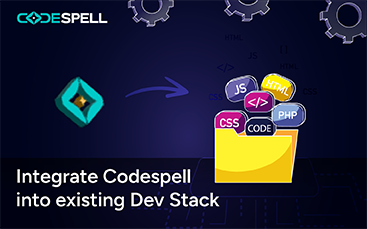April 22, 2025
Introduction
Building reliable APIs is essential to any modern application—but setting them up from scratch is time-consuming and prone to inconsistencies. What if your team could streamline this process using visual flows to generate backend scaffolding and enforce coding standards?
With Codespell’s Design-to-Code feature, you can.
It bridges the gap between design and development by automating API generation directly from design flows—drastically improving speed, code quality, and collaboration across dev teams.
Let’s explore the top benefits of using Codespell Design Studio for API design.
1. Automate Backend Scaffolding from Visual Flows
Instead of writing repetitive boilerplate code, Codespell allows teams to design user flows visually and automatically generate backend scaffolding and APIs. This reduces manual setup efforts and enables developers to focus on business logic rather than redundant tasks.
The design-to-code approach simplifies early development stages and eliminates inefficiencies across the board.
Curious to see how this can help your team? Discover how Codespell empowers developers to convert UI designs into clean, production-ready code in our blog: Design Studio – A Must-Have Tool for Modern Developers.
2. Standardize APIs Across Teams
Codespell helps your entire team work from consistent templates and structures. With predefined logic and naming conventions, there’s centralized control over how APIs are created. This uniformity ensures that your services remain aligned and scalable, reducing rework and miscommunication between teams.
3. Enforce Code Quality and Governance
Backend scaffolding generated through Codespell follows best practices by default. It uses industry-standard structures and includes built-in guardrails to ensure clean, maintainable code. This significantly reduces the chances of technical debt and enforces quality from day one.
4. Speed Up Developer Onboarding
New developers often spend weeks understanding legacy code or setting up project environments. Codespell makes onboarding easier through intuitive visual flows and standardized scaffolding that’s easy to trace and understand. It helps developers get productive faster without having to untangle inconsistent code.
5. Reduce Development Costs and Time to Market
By minimizing manual setup and enforcing best practices, Codespell reduces development overhead. It improves collaboration between frontend and backend teams, accelerates MVP and feature rollouts, and ultimately helps you ship faster at lower costs. For fast-moving product teams, this translates to better margins and quicker iteration cycles.
Frequently Asked Questions (FAQs)
Q1: How does Codespell Design Studio help in API creation?
It lets you build backend scaffolding and APIs directly from visual design flows, removing the need to code boilerplate manually.
Q2: Can I use Codespell if my team already has a dev process in place?
Yes, Codespell complements your existing workflow by reducing setup time and enforcing consistency, which is especially helpful for scaling teams.
Q3: What’s the benefit of visual flows for backend work?
They offer a shared understanding of the system, making collaboration easier and allowing even non-backend contributors to understand and design workflows.
Q4: How does Codespell enforce code quality?
By using predefined templates, naming standards, and consistent logic patterns, Codespell ensures that every scaffolded API adheres to industry best practices.
Q5: Is it suitable for early-stage startups?
Absolutely. It helps accelerate MVP development, reduce setup time, and maintain structure right from the start—critical for lean teams.
Conclusion
If you're looking to accelerate API design, reduce technical overhead, and maintain high code quality across projects, Codespell is your solution.
It’s purpose-built for teams that want to deliver faster, onboard developers more easily, and maintain clean, consistent codebases—without wasting time on repetitive tasks.







